An account of our attempt on Chobuje 6,685m
My body was feeling the tiredness and the effects of altitude. I was shaking in the cold and I was shrinking deep in the hood of my jacket in an attempt to protect my face from the strong wind. I was standing on a rocky ridge at 6000 meters on the North face of Chobuje in the Rolwaling Valley of Nepal. My partner was leading the way on the ridge towards a small breche. A connecting link to the final technical part of the face and the place that we were hoping to find some shelter from the constant wind in order to spend our second night on the face. The imposing Himalayan peaks were giving us a special performance with the fast-moving clouds around them. It was beautiful and terrifying all at once.
Our trip started nearly three weeks before that moment in the buzzing Kathmandu. My colleague and good friend Mihnea Prundeanu was researching and planning a trip to the Himalaya for a while now. We talk about it and I am invited, but I never fully commit until last March. Then the stress kicked in. I had always wondered how these expeditions work. How do you arrange transport, permits, food? How do you choose the peak? The face? Luckily Mihnea had a lot of answers for me and after extended hours of reading trip reports and flying around in Google Earth, the pieces of the puzzle started to solve.
First, we both agree that we are after something technical that we can do in simple alpine style, totally self-reliant. Nepal is a country full of well-known high mountains thus full of tourist mountaineers. Luckily they are mainly concentrated around famous high peaks like Everest and Annapurna whilst leaving lesser-known valleys still remote with lots of potential for adventure and creativity. Finally, we decided to go into Rolwaling, a valley west of Khumbu.
Just before leaving Kathmandu towards the mountains the news of David Lama, Jess Roskelley, and Hansjörg Auer reached us. I didn’t know them personally, but I felt crushed by the loss, as many in the climbing community did. It also scared us to death. One day before leaving on the biggest expedition of our lives, three of the greatest climbers in the world were presumed dead by an avalanche. Mihnea and I discussed it a bit, but we tried to put it in the back of our heads and not think about it. Nonetheless, we were both on the same page; let’s not only have a great trip, but also board the plane at the end to come home to our friends and family.
The hard part of organizing the trip was over and now we could just enjoy the experience. Following two days in the ‘’crazy’’ Kathmandu, we set out towards the Rolwaling Valley. After an eight-hour jeep ride on a fairly bumpy road we continued on foot from the small village of Chechet. The forest was full of colours with bloomed rhododendron everywhere and the trail was surprisingly well made. We were stopping a lot to take photos of the suspended bridges and the colorful flowers and the higher we got, the more stoked we felt. Then we saw the mountains for the first time.
Gaurishankar made an appearance through a hole in the cloud with its long snow flutings and steep faces. The view was surreal; like an oil painting in a gallery. We were excited with two big smiles on our faces. Three days later we reached our base camp – the village of Na. At 4200 meters and full of impressive peaks all around it, I felt that we were in the center of the universe. There we settle for the next three weeks.
We got to work immediately and, after a rest day in the village, we started our acclimatization with a long hike on Ripimo Glacier. From there we could see our main objective for the first time. On the way in, Chobuje was slowly revealing its steep faces. First the West face where Migma Sherpa put up a solo route; then the North West face that looked almost impossible; and then the North ridge and the North East face that was steep, technical, and imposing – exactly what we were looking for. We were like kids in the candy store; staring at all the mountains around and taking photos of every face that we could see possible lines going up. But Chobuje was the one that drew most of our attention, and we spend most of our time discussing our game plan.
Our acclimatization plan for the next weeks was simple; the aim was to spend some days and nights up high and then get back to Na to rest and recover. The conditions at that time were less than ideal with rotten snow starting from low altitude, and surprisingly high temperatures. We found ourselves battling in deep unconsolidated snow even on the approaches that were supposed to be completely dry. Even with early starts the snow slopes on the mountains were slushy and slow going. Nevertheless, we managed to spend some nights at around 5000m and to climb up to 5800m. For sure it wasn’t exactly what we were hoping for, but we were psyched to go for our main goal.
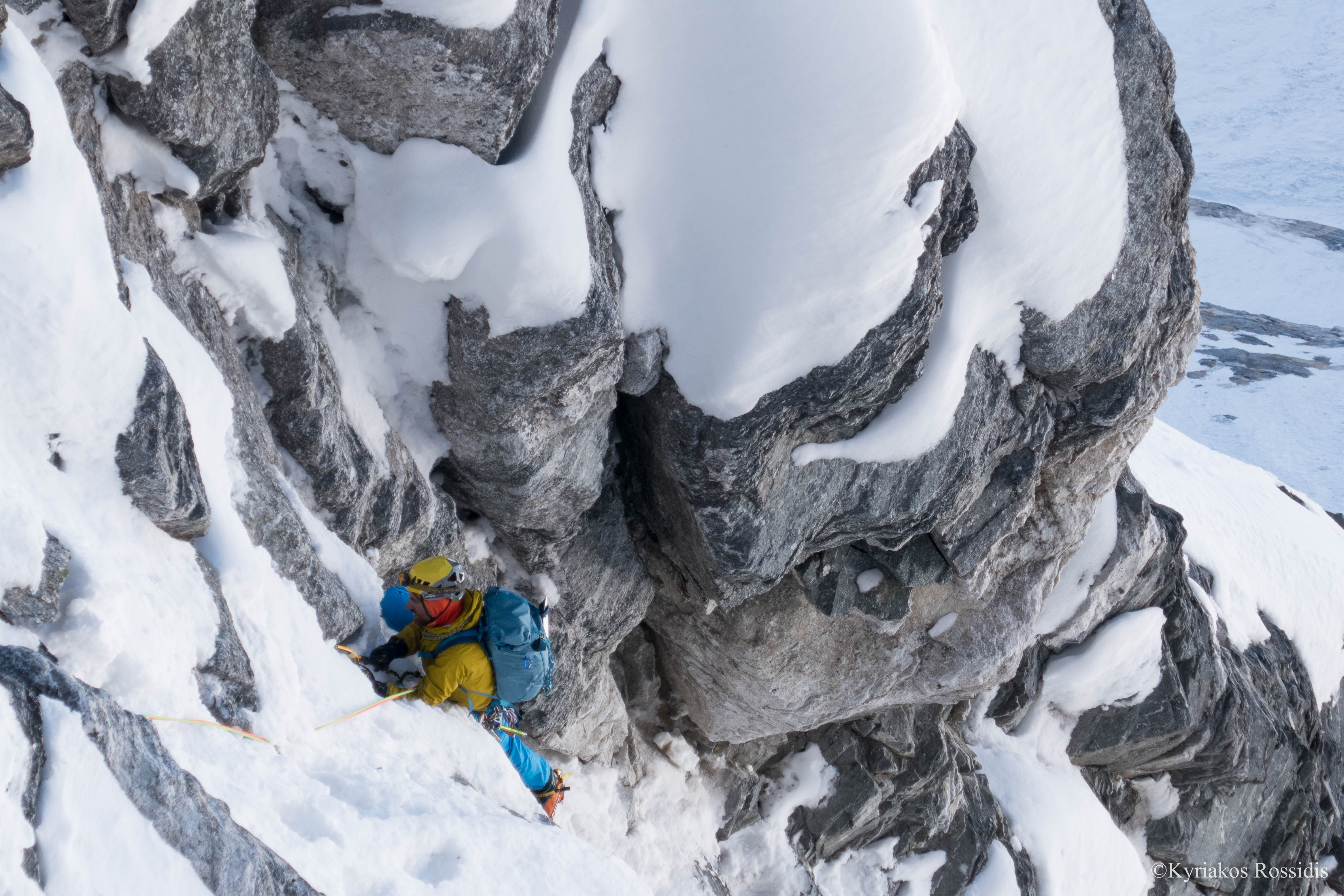
Mihnea climbing on unconsolidated snow and rock on one of our acclimatization climbs. 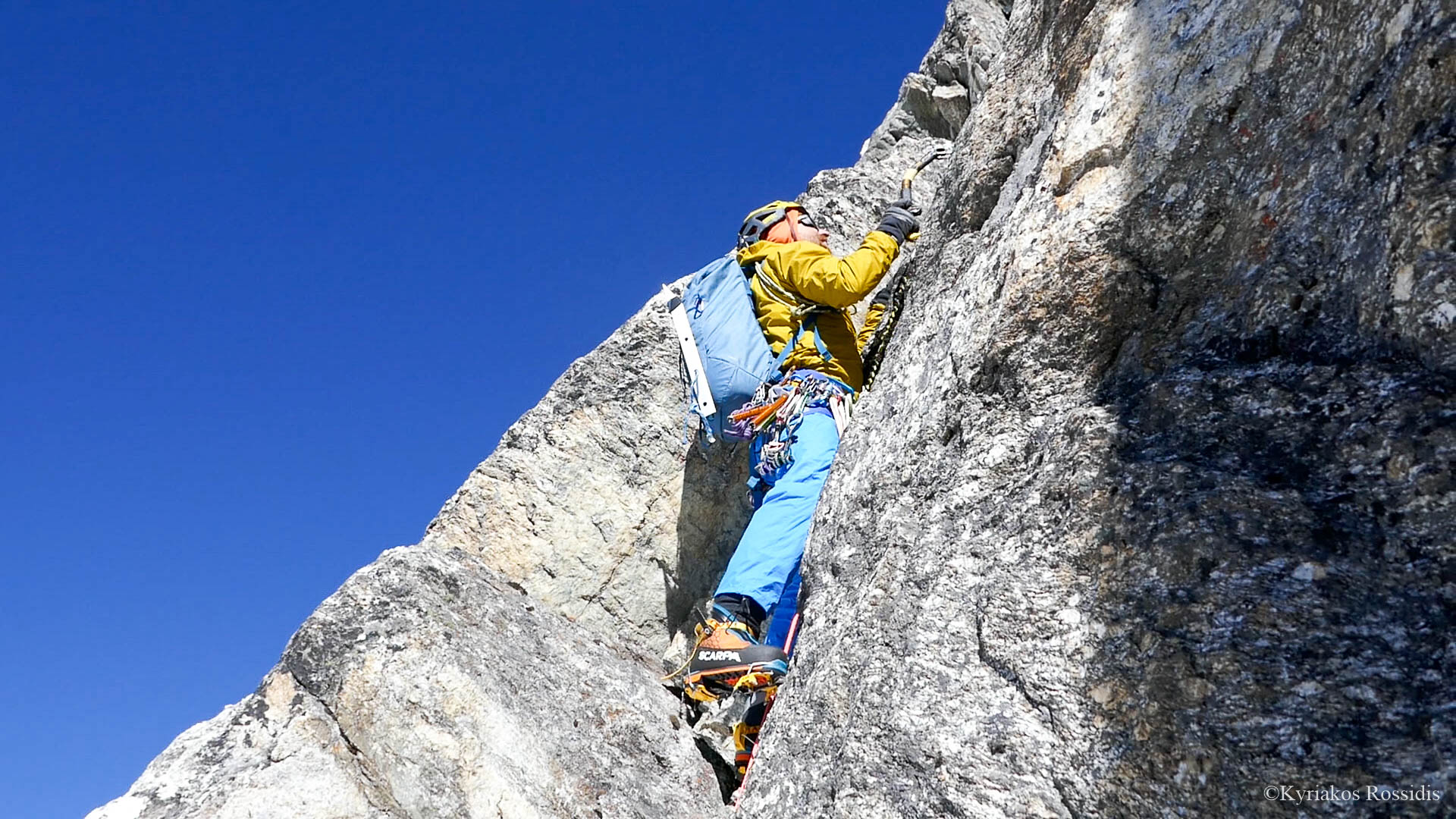
Mihnea dry tooling his way up an amazing line during our acclimatization.
After our last acclimatization trip we took a couple of rest days in the village with some bouldering to kill some time, and then we headed up Ripimo Glacier to stash some gear and have another look at Chobuje. This time the approach was completely dry and straightforward, and the conditions on the mountain looked entirely different from those that we had seen the first time. Our line looked to be in good condition, so we stash the gear and we went back to Na to wait for the right weather window to go for it. The weather during the following days was foul, but since we had no time to spare we decided to do the approach to our advance base camp in bad weather, then have a full rest day there to allow the fresh snow on the mountain to settle down and see the route in daylight to get a feeling of conditions.
We spent the rest day staring at the mountains around us and rearranging gear for the coming days. The main subject of the day was the line and the tactics for the climb. In the meantime we treated ourselves to a meal and did some socializing with the friends that came from the village for a day trip. Then it was time to go to sleep. While twisting from side to side in my sleeping bag I wished that I could sleep deep but instead the picture of the face that we were about to climb was coming in my mind and I could feel the anxiety running through my body. The alarm went off and we were both executing without much talking. After having breakfast we started our approach through the dry, broken Ripimo Glacier. Luckily, we managed to navigate our way around the big crevasses and glacier lakes, and we found ourselves below the face with no major issues. We then made steady progress on the lower snow slope soloing without much talking, both deep in our thoughts. The most concerning thing was the weight of my pack. I have never set off on a climb with so much equipment. We checked our gear many times but we couldn’t see a way to try our route with less. We have chosen our line up the North face from the photos that we took, and it was time to make it work by finding the line of least resistance.
Dawn brought light to the first question mark of our route, a section that we couldn’t see in advance. It was steep but doable, so it was time to pull the ropes out and get into proper climbing mode. I took the lead and started to navigate my way through medium quality rock, mixed with some choss and the odd ice patch. We alternately lead four long pitches of similar terrain, and this brought us to the top of the first technical section on the route. The climbing wasn’t really hard (around M4+) but it was exactly what we needed to get into the mood. Then onto a simple fifty-five degree slope of snow and ice; simple but heartbreaking work due to the thin air. From what we learned on our acclimatization climbs we had to tackle this kind of terrain with slow but steady simul climbing, and so we did. It was only early afternoon when after about 8 hours on the move we reached our first planned bivy spot and the face was getting into an unclimbable state due to the strong sun and the increasing winds. There we found an overhanging rock band and we dug a snow platform beneath, barely enough for our bivouac tent. We still had the rest of the afternoon and the first part of the night to cook, eat, and rest until midnight when we were planning to get back in business. All seemed perfect, but it didn’t take long for the wind to pick up and throw constant spindrifts from the slopes above onto us. They were not dangerous since the tent was partly protected by the rocks above, but still the sound of the drifting snow and the strong winds hitting the tent was enough to keep us on the edges of our seats. The bonus was that we didn’t have to search far for snow to melt since the door of the tent was constantly filling up with snow. We hydrated and cooked the freeze dried meal that we had packed for the first day. Luckily my mind wondered around because if I sat down calmly and thought about what we were doing, the size of the face, bad weather potential, remoteness etc., I would have freaked out and not carried on. So in order to cope with the potential seriousness of actually freaking out badly, the mind created distractions
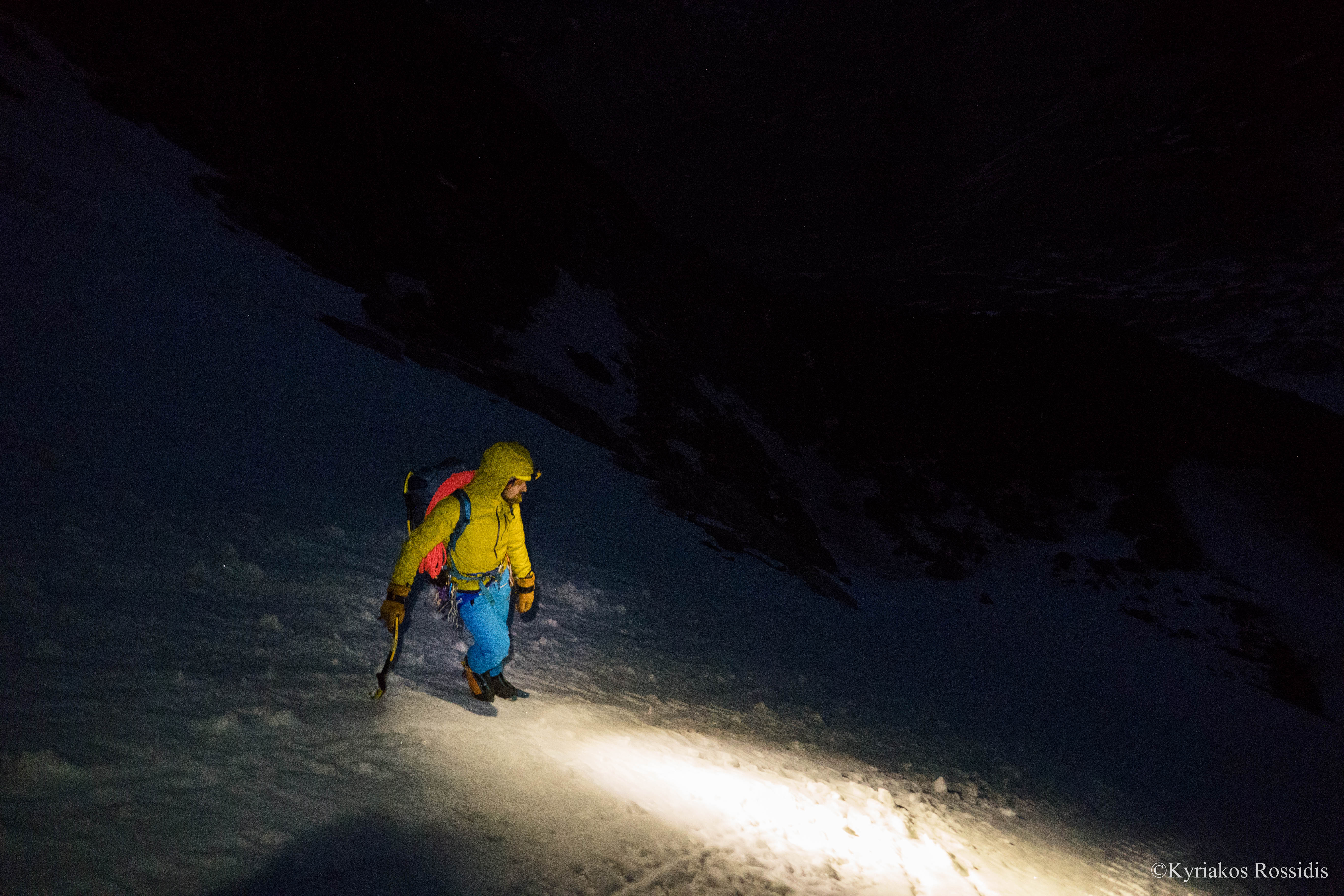
Mihnea on the lower snow slopes. 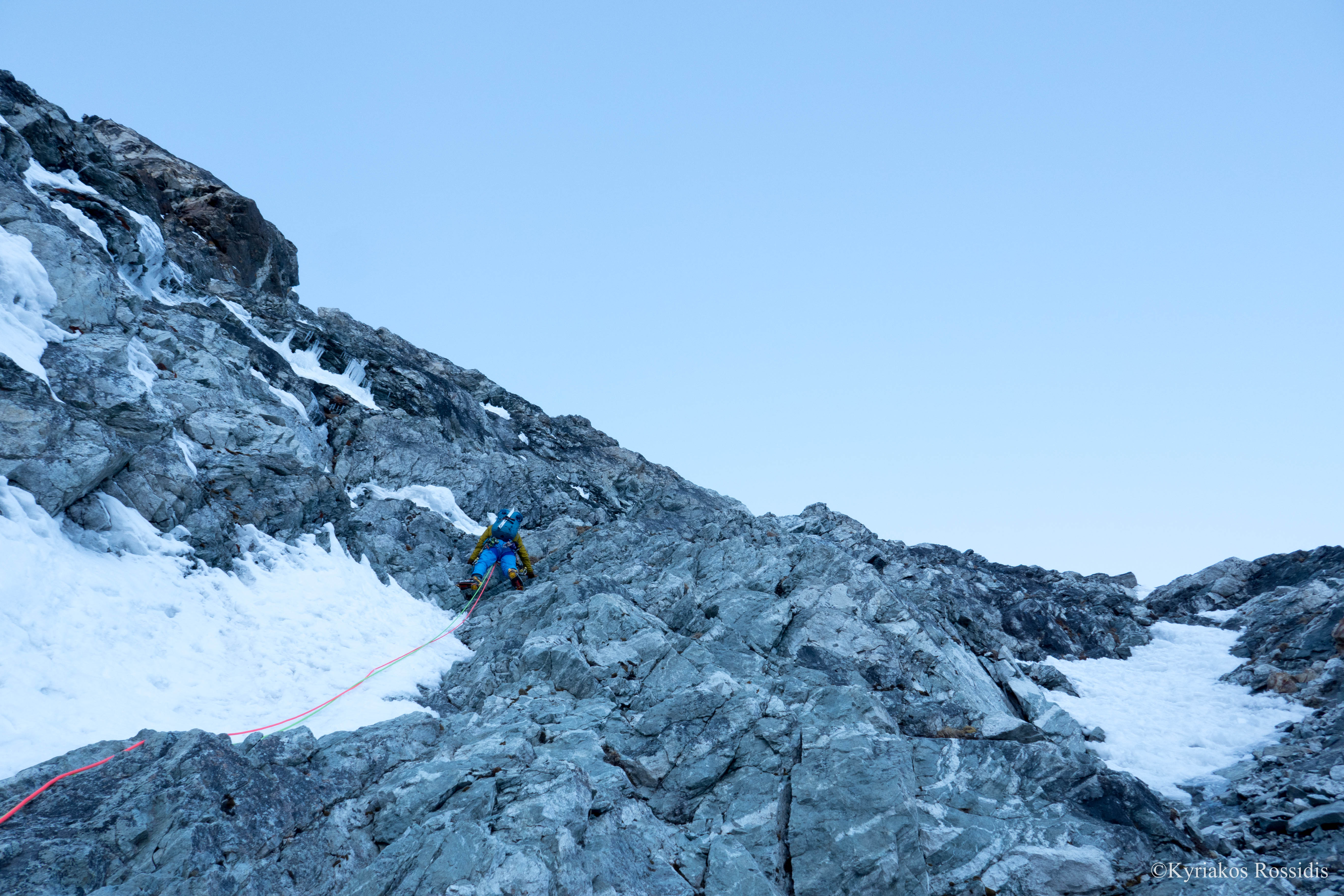
Climbing the first question mark of our route. 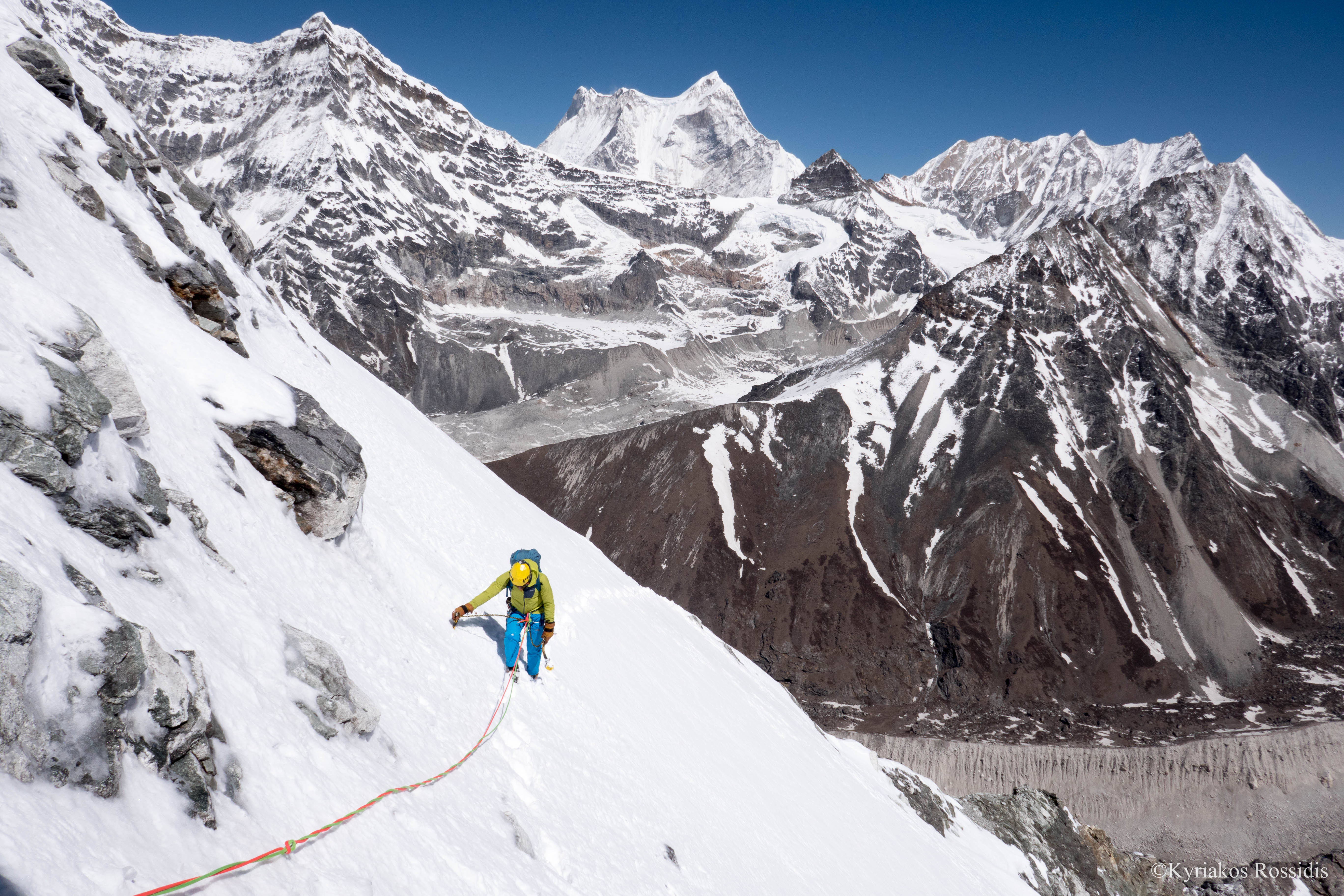
Stunning views from our bivy ledge. 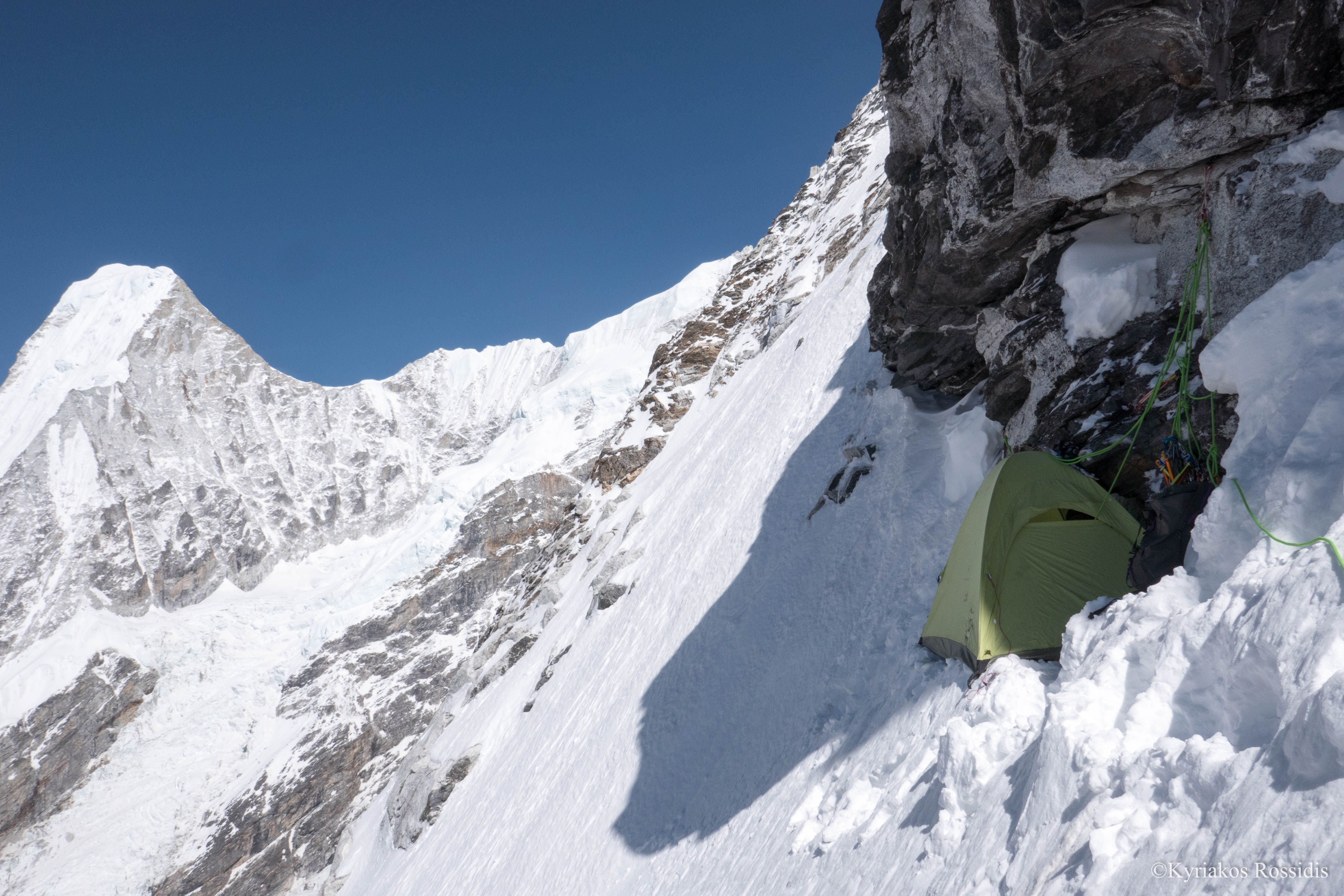
Just before the spindrifts started coming down on us.
The alarm went off at midnight but the weather outside was still full bore, and we did not want to climb steep mixed ground with the constant spindrifts weighing us down. So we decided to nap a bit more and try to make a move a bit later. It was early morning when we decided that we could no longer stay in the already wet, full-of-condensation tent. The plan was simple; try to pack everything as fast as possible and start climbing the mixed terrain above. We were climbing into unknown territory. This was classic alpinism and we felt proud but also intimidated. The mixed terrain was relatively easy at the beginning but it got harder a few pitches later. Mihnea set off and received the first hard pitch for the day. He was forced to climb almost all of the rock section by dry tooling with marginal gear. What a lead (M6/M6+). Then it was time for me to get on the sharp end of the rope. My hard mixed pitch was no easier. I had to rock climb with no gloves and with the crampons jammed in weird positions. I had not expected to find this level of difficulty, and the terrain was steeper than how it looked on our photos.
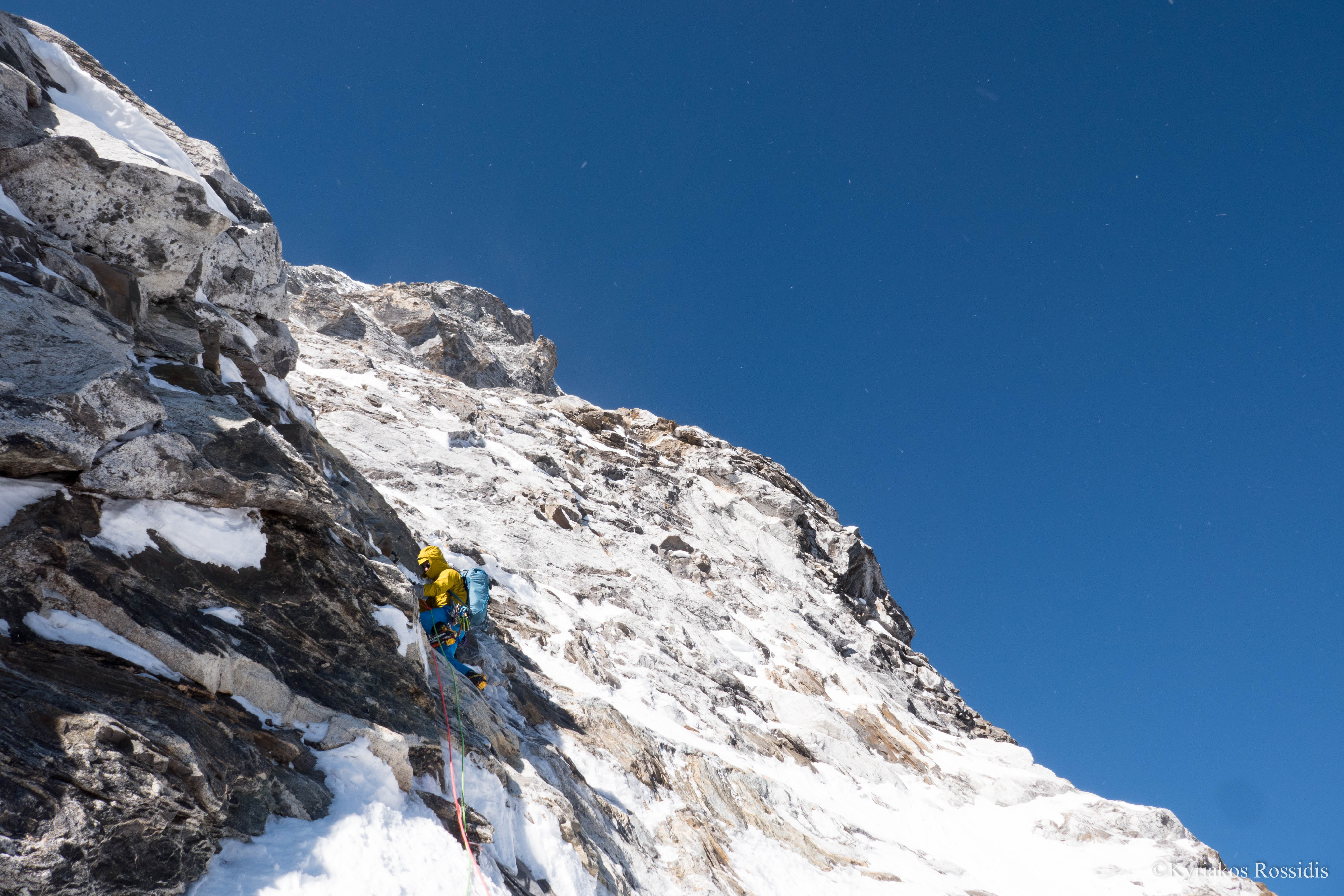
Mihnea on the first crux pitch. 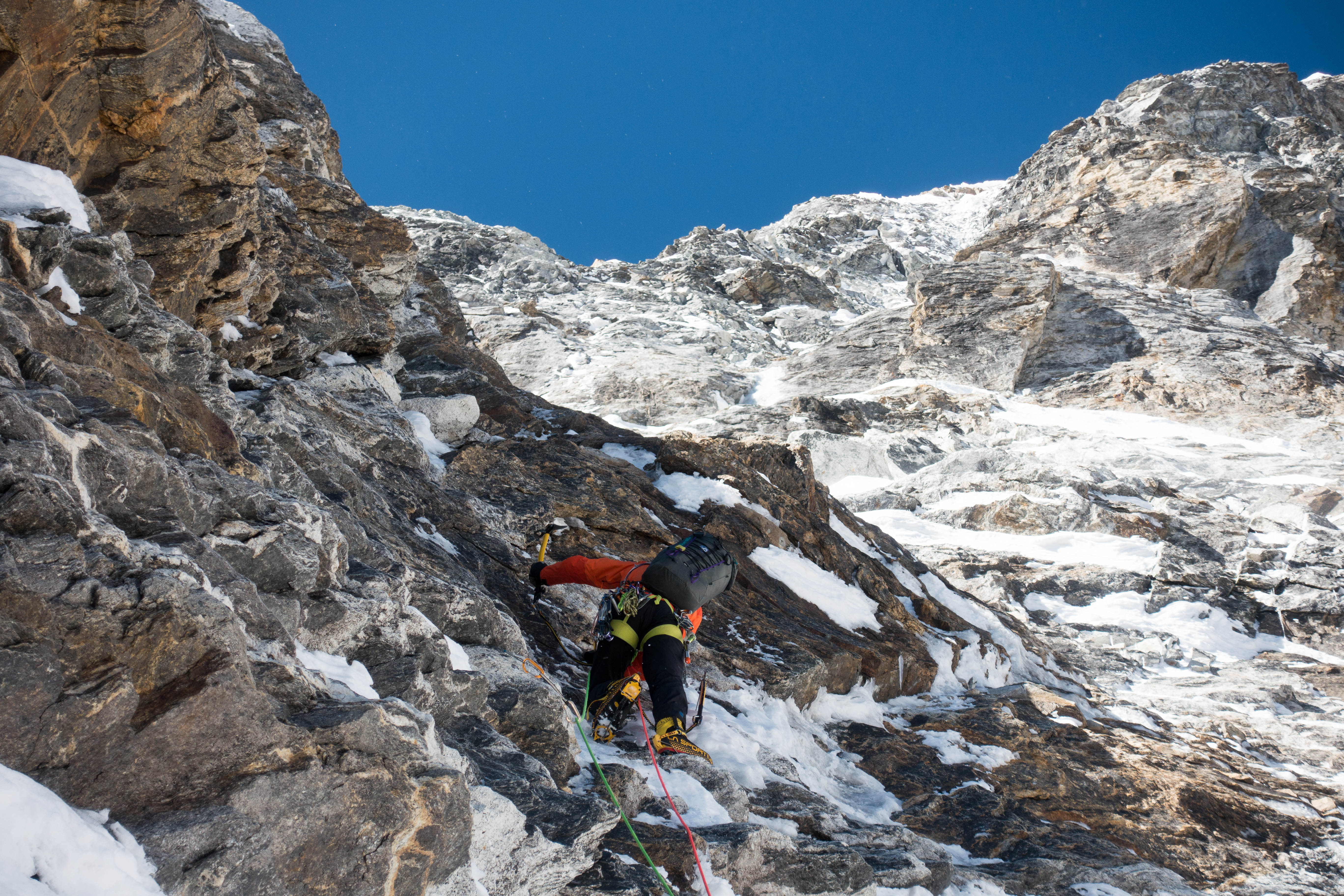
Kyriakos on the second crux pitch.
© Mihnea Prundeanu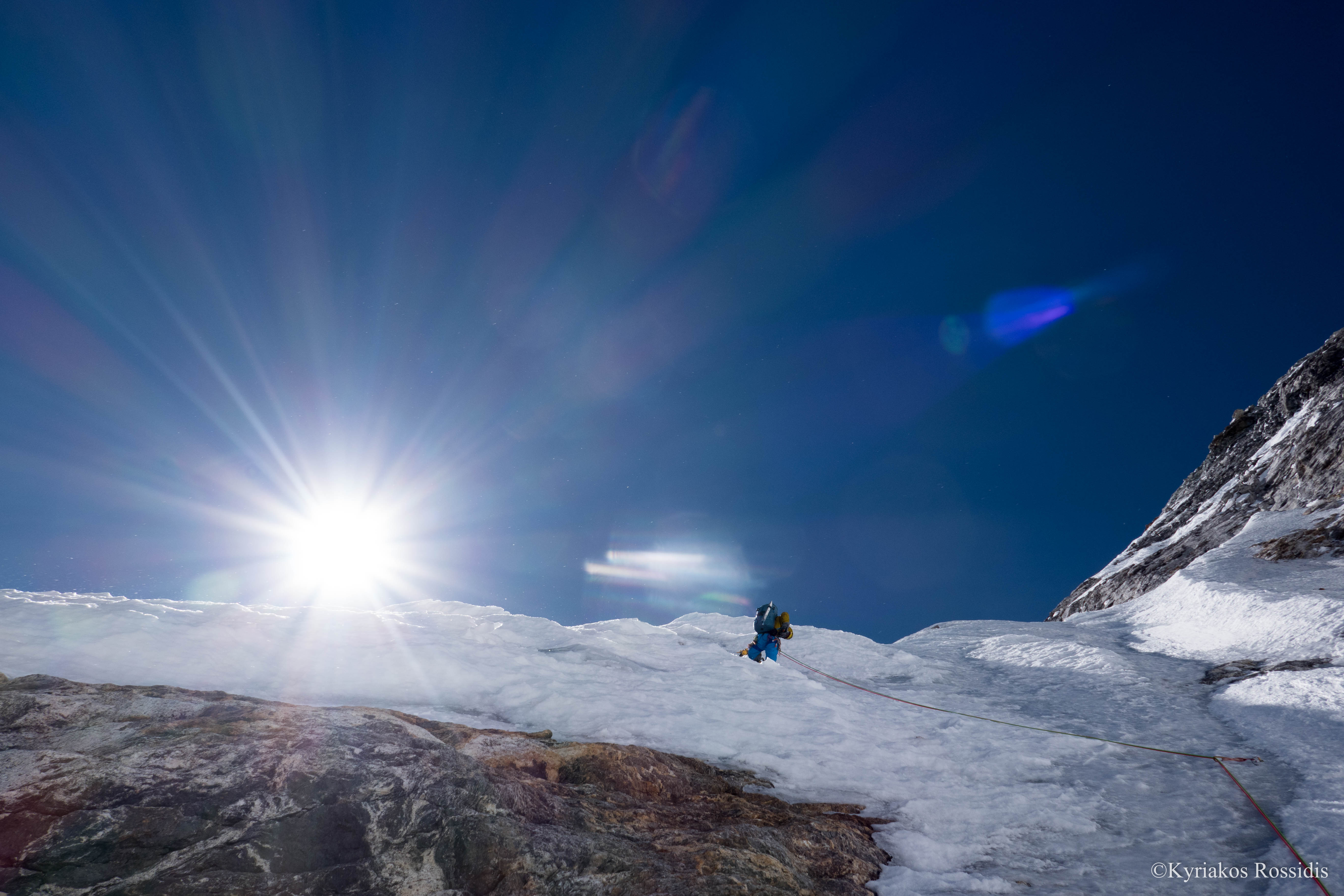
Good conditions high on the Face. 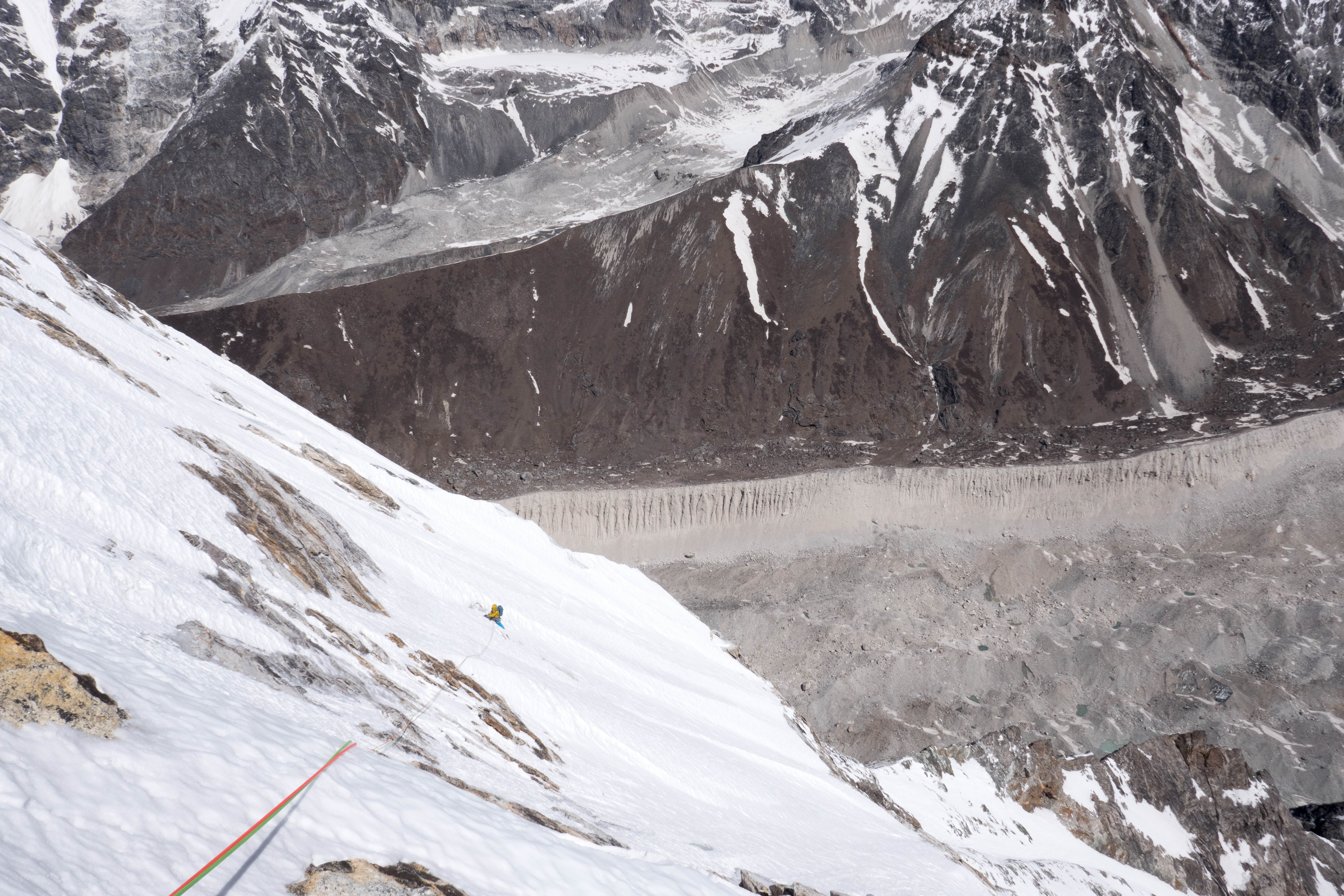
Mihnea on the ice flutings.
Then it was time to move on to the ice flutings. The condition of the ice was amazingly good with mostly plastic alpine ice and some spots with hard blue ice in between. There we made fast progress, and by diagonally climbing to the left in order to avoid the overhanging rocks above we reached the start of yet another mixed section. The climbing there wasn’t desperate but consistently hard mixed climbing. That mixed section gave us access to the narrow, exposed secondary ridge where we were hoping to spend our second night on the mountain. Our hopes for a bivouac vanished when we saw the steepness and the complexity of the terrain. We tried to search for an undercut under some overhanging rocks in order to dig a platform or at least somewhere where we could get protection from the strong wind but without success. The only option we had was to spend the night sitting out in the open. This is not unusual; if we had bivouac bags and the wind wasn’t that strong it would have been ok, but we were not carrying them because we had brought the tent. The extra warmth of the tent only works when you find somewhere to pitch it, and if we cannot have the tent then we cannot use the sleeping bags because they would get wet and useless for the next days.
With all our clothes on we sat there for a while discussing our options. Either we kept going and attempted to make a push to our next planned bivy; but that would have meant climbing hard terrain whilst already mentally and physically exhausted from all the climbing that we had done so far and become totally committed. Alternatively, we escape down the only reasonable escaping route down the North-East face that was only possible to access from that exact point without being massively exposed to the huge seracs all around it.
Where the line between risk and reward lies is a very personal opinion. And where that line is changes every time you are in the alpine. During our decision, that line shifted from the value of a personal sublime moment towards the value of longevity. So we opt for the second option. The descent turned out to be complex, but many hours later, and with much of our gear left on the mountain for rappelling, we manage to get back to Ripimo glacier; safe but exhausted and mentally shattered.
Our adventure finished without a summit but that did not affect our spirits. We were there to explore new mountain ranges, new cultures, and most importantly to see how our bodies function on technical high altitude routes. The purity of 2 folks coming up at the bottom of the mountain with a pair of ropes, packs and a rack is, for me, the way to do it. Letting the mountain decide whether you are going to the top, or half the way to the top, or two-thirds gives you a richer experience and that’s exactly what we were looking for.
Now with more experience on what it takes to climb new technical routes in the greatest ranges we are already thinking where our sense of exploration, adventure and creativity might lead us next.
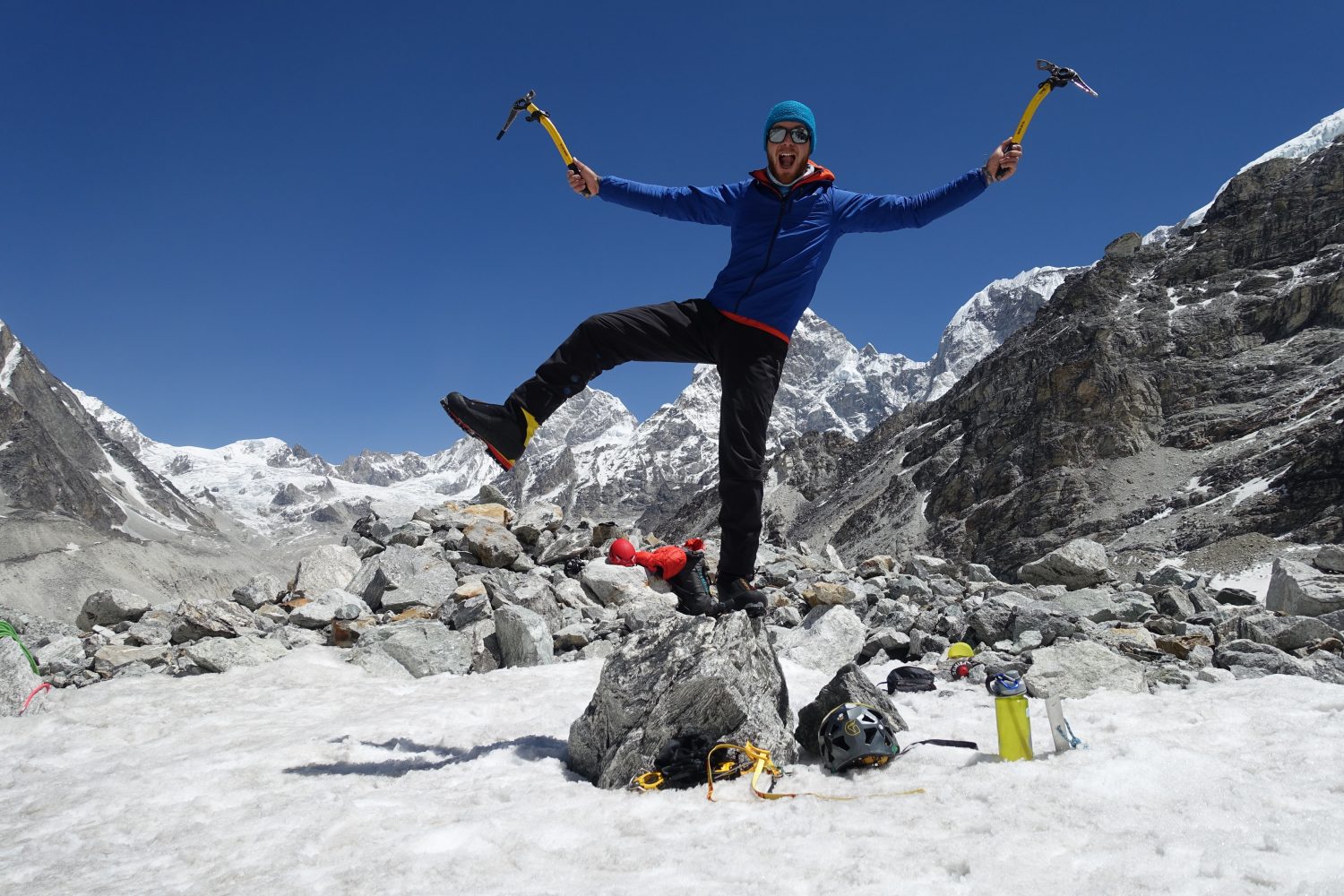
High spirits and excitement even after an unsuccessful climb. ©Mihnea Prundeanu

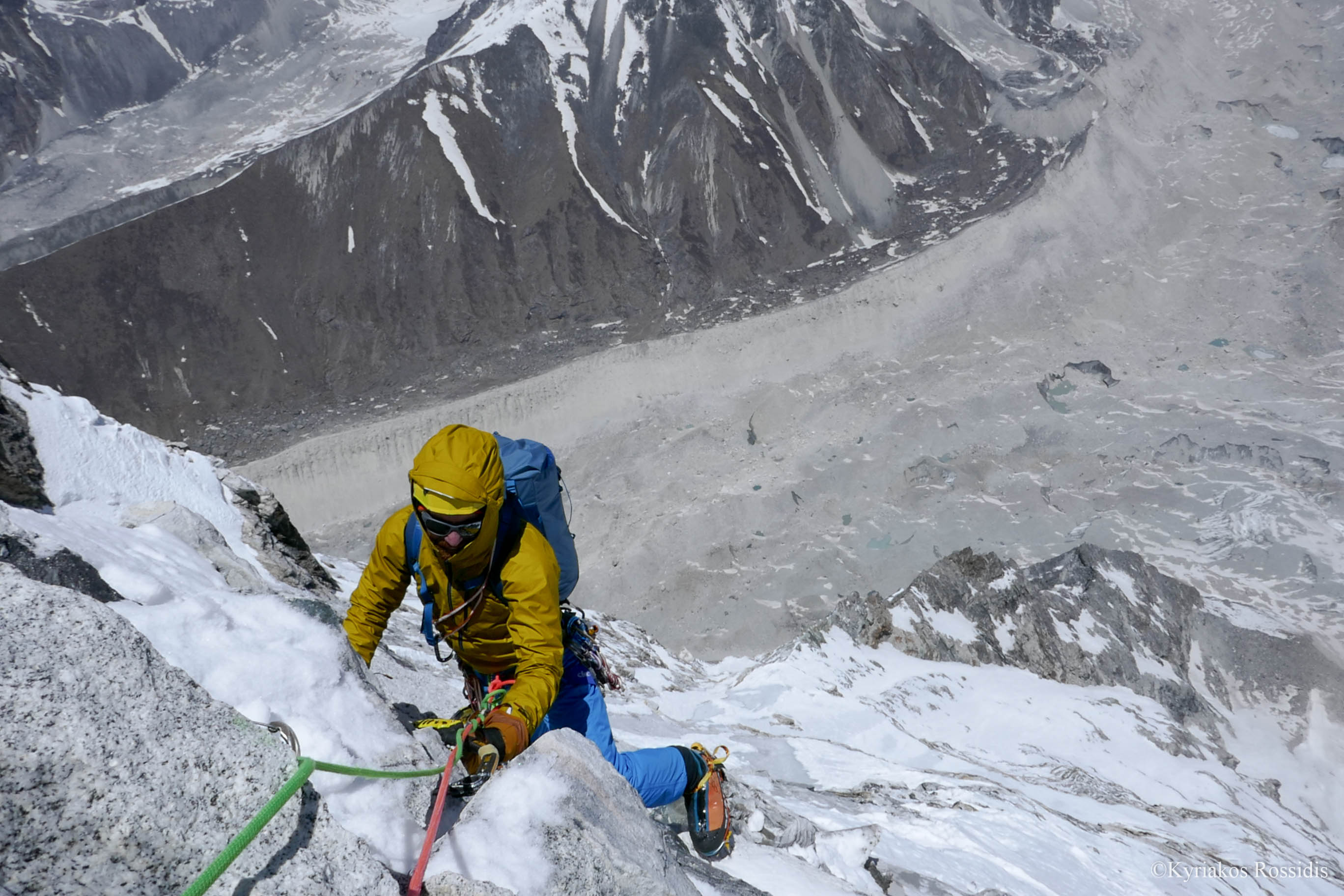
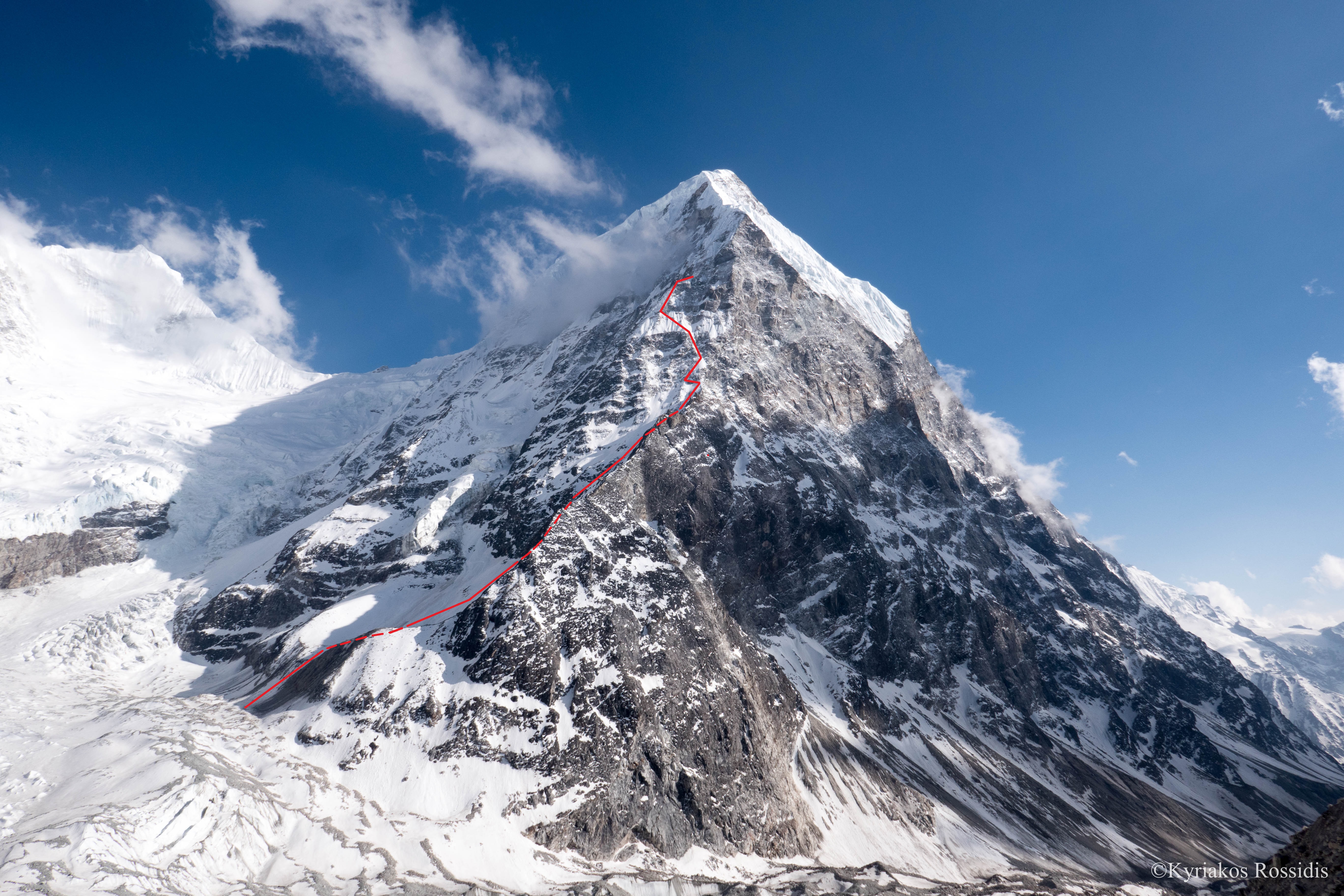

Leave a Reply